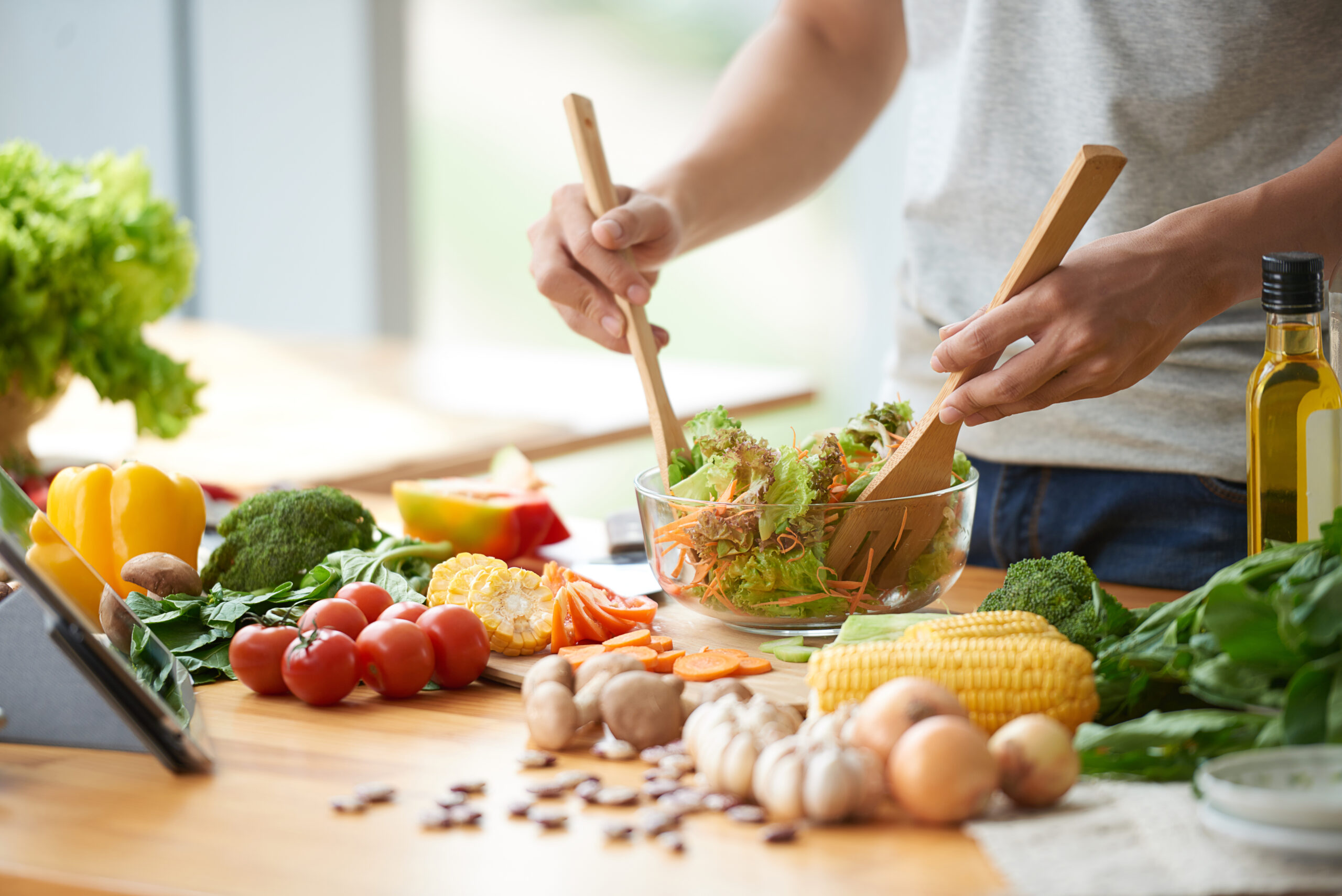A balanced diet is one that provides all essential nutrients in optimal concentrations for a given animal’s diet. It involves knowing how many carbohydrates, proteins and fats you should be eating and when. This includes achieving a good level of satiety and managing peptides such as ghrelin, leptin, insulin, etc.
Choosing the right fats
Eating fat is essential if you want to be fit, energetic and healthy. But that doesn’t mean eating chips, pizzas and other fried foods at every meal! You need to limit the trans fats found in ultra-processed foods, which are responsible for bad cholesterol. On the other hand, you should opt for foods rich in good fats: omega-3s. These are found in oily fish such as salmon, trout, herring, cod and mackerel, in walnut, linseed, rapeseed and hemp oils, in walnuts, chia seeds, cabbage and also in eggs.
Limiting sugar
We often consume sugar without realising it! So we need to be careful not to eat too many carbohydrates. In addition to the sugar cube that goes with coffee, we often consume a lot of sugar without really realising how much we’re taking in. For example, a glass of apple juice (with no added sugar) is equivalent to 5 lumps of sugar (21g), a can of soft drink is equivalent to 9 lumps of sugar (36g) and a flavoured yoghurt is equivalent to 5 lumps of sugar (18g).
It’s important to remember that unlike fat, sugar has no nutritional value, as our bodies produce it naturally from proteins and fats.
Eat less meat
Even though our consumption is falling more and more each year, we still eat too much meat. Often at both lunch and dinner. It is recommended limiting yourself to 500g a week of beef, lamb and pork. And for charcuterie, the recommendation is even more drastic, just 25g a day (the equivalent of half a slice of ham).
Fish, on the other hand, should be eaten at least 2 times a week, alternating oily fish (salmon, trout, sardines) and lean fish (cod, sole, skate, sea bass). On the other hand, avoid preparing smoked, salted or fried fish, or fish cooked at very high temperatures, as they have little nutritional value.
Eat more pulses
We currently eat an average of 11g of pulses a day, which is still too little. An intake that is still too low. Pulses are a fantastic source of fibre, protein, vitamins and minerals, and protect against diabetes, heart disease and cancer. So don’t hesitate to add chickpeas, broad beans, split peas, white or kidney beans and lentils to your menu more often.Eat more wholegrain cereals
Although cereals can be found almost everywhere in our diet (flour, bread, rice, pancakes, breakfast cereals, pizza, pasta), it’s better to opt for wholegrain cereals. They are much more satiating than other cereals, so you can avoid snacking. They also contain more vitamins and minerals and improve digestive comfort. Finally, they have a real impact on reducing chronic diseases such as diabetes and cardiovascular disease.
Eat 10 fruit and vegetables a day
The best is to eat at least 5 portions of fruit and vegetables a day, a target that many specialists feel is too low. 5 portions of 80g of fruit and vegetables is only 400g a day. Don’t hesitate to set the bar a little higher and aim for 10 fruit and vegetables a day, with particular emphasis on vegetables to avoid sugar.
Choose raw vegetables at the start of your meal (salad, green vegetables), which improve digestion thanks to the enzymes they contain.
Beware of pollutants
The difficulty of identifying food combinations that meet the nutritional needs of the population while limiting exposure to contaminants has now been highlighted. For a limited number of contaminants, notably inorganic arsenic, acrylamide and lead, exposure levels remain a cause for concern. As mentioned in the conclusions of its recent opinions on total diet studies (EAT2, EAT infantile), efforts to reduce levels of contaminants of concern are still necessary. Ultimately, this will ensure that people’s food choices are governed by nutritional constraints and not by levels of contamination in the food.
To put it plainly: if you eat more fruit and vegetables, the risk of chemical contamination becomes a cause for concern. There is no solution… except to eat ORGANIC.
Get more sun
The main population as a whole has a chronic vitamin D deficiency. To remedy this, we rely on greater exposure to the sun (careful, no UV cabins, which we’ve just had confirmation were harmful from the first minute) or we can turn to supplementation with food supplements.
Less heavy cooking
For some time now, rapid cooking at high temperatures has been increasingly discouraged, as it degrades vitamins and trace elements and leads to the creation of toxic compounds. Instead, it’s a good idea to opt for steaming and low-temperature cooking.
Get moving!
There’s no need to embark on intensive activities; a little walking every day, climbing the stairs or cycling may be enough, but the important thing is to do a little every day.
